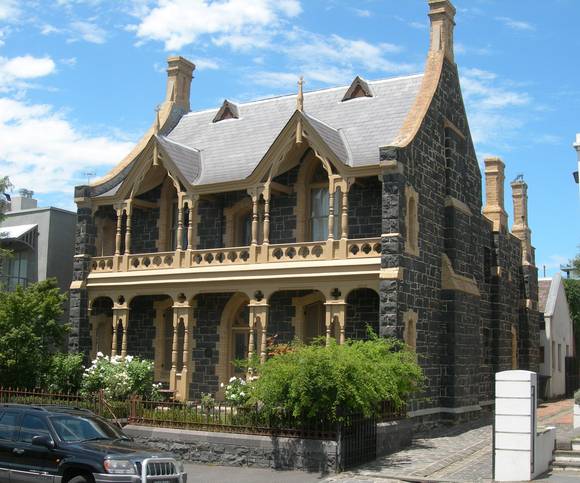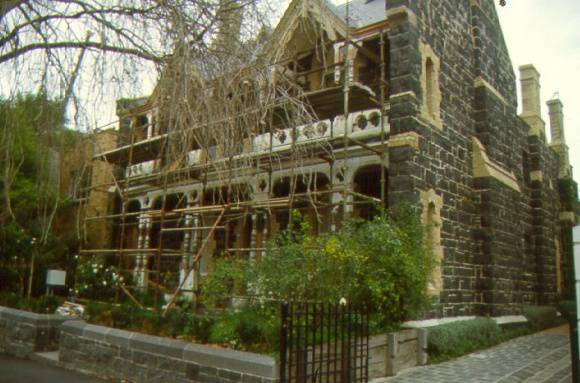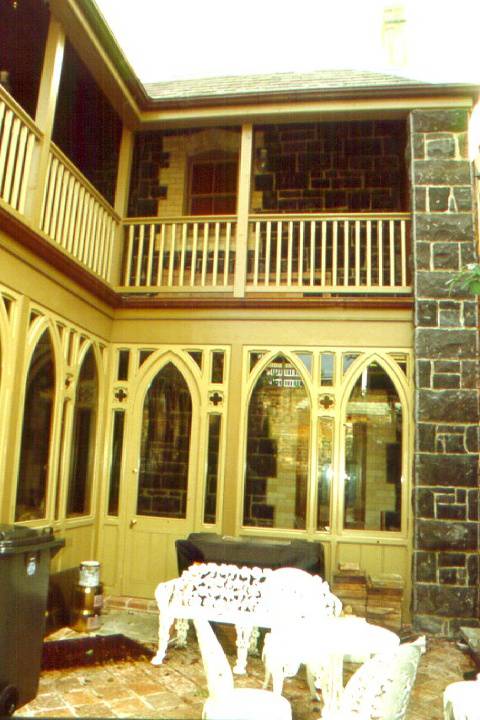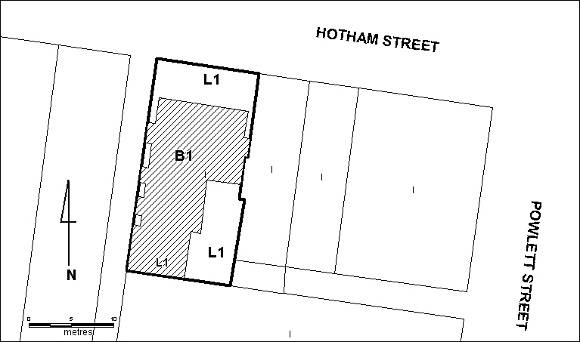| Back to search results » | Back to search page » |
|
RESIDENCE
Location157 HOTHAM STREET EAST MELBOURNE, MELBOURNE CITY
File Number602800LevelRegistered |
|
Statement of Significance
What is significant? The Residence, 157 Hotham Street, was erected in 1861 by builder Robert Huckson for Clement Hodgkinson, the Deputy Surveyor-General. Contemporary reports cite the designer as a Mr Reid. It is highly probable that this is Joseph Reed, architect of the State Library, Melbourne Town Hall and the Royal Exhibition Buildings. 157 Hotham Street is in the picturesque Gothic style. It is a symmetrical composition beneath a steeply pitched gable roof with parapeted gable ends. These gable ends, each with light coloured brick copings and topped by a tall chimney, sweep steeply down to the eaves. The steep pitch of the slate roof is punctured by two small dormer windows near the ridge line. The eaves extend down at the front of the house to create a roof to the two storey verandah, which is supported by paired turned timber posts. Two ornate gablets, decorated with bargeboards and pendant and finial posts, rise above verandah eaves line to dominate the main facade. The verandah balustrade has quatrefoils cut from the timberwork. All the openings are formed by light colour bricks with sandstone keystones, and are styled as Gothic pointed arches or depressed pointed arches. The first floor windows and the front door each have a quatrefoil fanlight. The ground floor windows have shutters. Internally the house retains much of its original layout, including a rear bluestone addition of c1866. Some of the original finishes survive, including skirting board profiles, plasterwork finishes and ceiling roses. Behind the house is a brick stable, reputedly dating from the late 1860s, and now incorporated into the main structure. Square pavers found in the rear courtyard are stamped ‘J Glew’, and are from the Brunswick brickworks of John Glew, a brickmaker apparently favoured by Joseph Reed. The bricks used in the construction of 157 Hotham Street were also supplied by Glew, some having been found with 'JG' stamped in the frog. The coping bricks may be Glew’s ‘fancy whites’, which were first produced around the late 1850s. How is it significant? The residence, 157 Hotham Street is of architectural and historical significance to the State of Victoria. Why is it significant? The residence, 157 Hotham Street is architecturally significant as an intact example of the picturesque Gothic style. Surviving examples of this style are highly unusual in inner Melbourne. The picturesque outline is suggestive of a cottage, although the overall effect is quite robust and over scaled. The house is significant for its decorative mix of bluestone and brick construction and demonstrates the revival of face brickwork in the early 1860s. The residence, 157 Hotham Street is architecturally significant as an example of the domestic work of prominent Melbourne architect Joseph Reed. The house demonstrates Reed’s versatility for working in any stylistic idiom. It was one of his last works as an individual practitioner before entering into partnership with Frederick Barnes. The residence, 157 Hotham Street is historically significant for its associations with Clement Hodgkinson, acting surveyor-general, 1857-1860. Hodgkinson was a contract surveyor in New South Wales from 1840 to 1842 and as a result of his travels published 'Australia, from Port Macquarie to Moreton Bay' in 1845. In Melbourne he worked with James Blackburn on plans for the Yan Yean water supply, and in the 1860s, during his residence of 157 Hotham Street, was assistant commissioner and secretary of the Board of Crown Lands and Survey. Hodgkinson had also helped to lay out the nearby Fitzroy Gardens and had significant responsibility in the design and maintenance of the Flagstaff and Exhibition Gardens.
Group
Residential buildings (private)
Category
Town House







